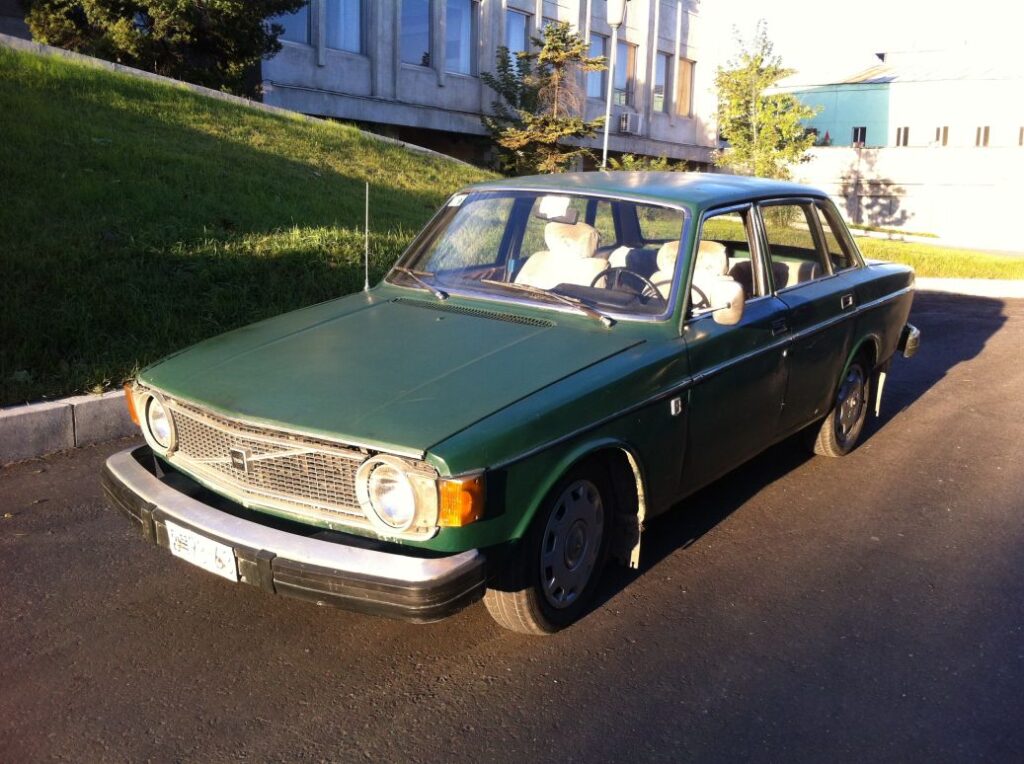While I admit upfront that this has nothing to do with buses or public transport, it does have something to do with one of every bus fans’ favourite brands. This news, while reported in 2016 has been doing the rounds lately on the interwebz and I thought I’d write on it.
Let’s take a walk down memory lane to the 1970s when something interesting took place. The Democratic People’s Republic of Korea (DPRK), also known as North Korea was establishing diplomatic contacts with western nations and among them was the Kingdom of Sweden. The DPRK ordered 1,000 Volvo 144 cars from the Volvo Car Corporation (then part of Volvo AB), which were delivered in 1974.
The Volvo 144 was the first in the 140 series of saloons (or sedans) and made its first appearance in 1966. The nomenclature indicated that it was the first series and was a four-door saloon with a four-cylinder engine.
While the North Koreans took delivery of the cars, they never paid for them. The Swedes meanwhile have not clarified what all was included as part of the trade deal. The sale was insured through the Swedish Export Credit Agency (EKN) which stepped in and ensured that Volvo Cars did not go bankrupt. However, the debt on the sale, along with interest had accumulated to US $328 million in 2016. That’s roughly ₹2,680 crores, based on the current (2023) exchange rates! The Swedish Export Credits Guarantee Board sends a reminder to the DPRK government every six months.
It is unknown whether the original deal included spare parts but Volvo Heritage believes that due to the bulk purchase by North Korea, the 144 was common across the world and thus getting spares from elsewhere would be easier. However, the cars are rare these days, and when seen, usually act as taxicabs.
In 2016, the Swedish Embassy in Pyongyang tweeted out a picture of a Volvo 144, captioned Still going strong. One of the Volvo’s from yr 1974 still unpaid for by DPRK. Running as taxi in Chongjin w almost half million km on odo!

The lack of payment for these 1,000 cars prompted Soviet diplomats to label it as the “largest car theft in human history.” Imagine being a Communist nation in the 1970s and mucking up so bad that the Soviet Union mocks you. I know.
Founded in 1927 as the automobile division of SKF, the Volvo Cars Corporation or Volvo Cars remained a part of the Volvo Group or Volvo AB until 1999 when it was spun off as an independent company, with both of them sharing the Volvo trademark. Volvo Cars was acquired by the Ford Motor Company as part of its Premier Automotive Group that included Aston Martin, Jaguar, Land Rover and Volvo. With the sale of Aston Martin to a group of American investors and Jaguar and Land Rover to Tata Motors of India, Ford divested Volvo Cars to China’s Zhejiang Geely, better known as Geely. Volvo Cars’ history is very similar to American telecommunications manufacturer Motorola that split in 2011 to form Motorola Solutions and Motorola Mobility, the latter of which was acquired by Google and then eventually Chinese red-chip firm (listed in Hong Kong) Lenovo.
Geely also owns several other prominent European automobile brands, such as Polestar, Lynk and the iconic British brand Lotus, along with the London EV Company (formerly the London Taxi Corporation), which is known to manufacture the iconic black cabs seen in London.
Well, that’s all from me this time.
If you’re interested in another international incident that was funny, look no further from North Korea’s backyard, Russia. In 2018, a group of Russians in Vladivostok donned a cardboard cut-out shaped like a bus to cross a bridge that was off-limits to pedestrians. You can read about it here:
In 2018, A Group Of Russians Dressed Up As A Cardboard Bus To Cross A Vehicular Bridge
Featured Image: A 1974 Volvo 144. (Photo: Niels de Wit from Lunteren, The Netherlands)
![]()

